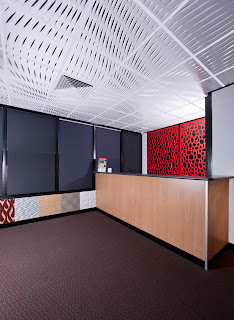The images selected illustrate the points on colour discussed in the article. Images of the rooms are shown one with tinted light, cool colours showing how the colours make the rooms appear bigger due to the fact light/cool colours appear to recede.
In the second group of images the same rooms now have a mid colour. In the third group the warmer darker colours appear to advance into the rooms. The colours can make the rooms appear smaller and more intimate.
Tip: Sometimes it helps if you half close your eyes as you view the images
Many people consider colour the most important of the interior design elements. Colour can create moods, make a room appear bigger or make a room appear colder or warmer. It is a powerful interior decorating tool.
As stated in the article colours are basically light or dark, warm or cool. Light and cool colours tend to recede (when used on the walls of a room they can make the walls appear to move out) and can make a room appear bigger. Dark and warm colours appear to advance into a room and can make a room appear smaller.
You need to consider three many things when selecting colour, first is the aspect of the room. The second consideration is your personal preference and the third size and shape of the room.
If a room is large warm or dark colours can make it appear smaller. If the room is very long and narrow the short walls can be painted in a darker or warmer colour than the colour used on the longer walls. This will make to shorter walls appear to advance into the room in comparison to the longer walls, making the room appear shorter and wider.
If you would like to view the whole article just click on this link http://www.articlesbase.com/interior-design-articles/hints-with-tints-interior-decoration-with-colour-2636737.html
Louis Cheskin a market research pioneer and
founder of Cheskin Research states
‘The right colours are silent music:
the wrong colours irritate and disturb’








































